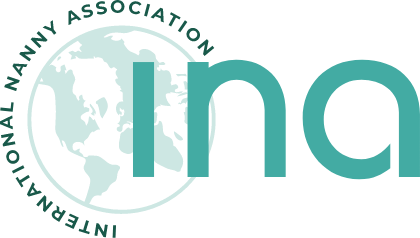Most nannies are looking for new ways to engage their charges. New and innovative ways to add value by integrating skills and concepts is within your reach. Start by thinking of a simple everyday activity then pump it up! The first priority is to ensure the activity is safe. Next, consider if it is developmentally age appropriate for your charge. Scholastic Early Childhood Today is a helpful source is to find developmental charts. Once those 2 conditions are met, explore ways the activity can be adapted to pump up the volume or add value.
In a previous blog published on October 1, a new INA Library resource was shared titled, Pump Up the Volume. In the video, a simple game of “Go Fish” is used to introduce and reinforce math skills. Rote counting, one-to-one correspondence, number recognition, adding two single digit numbers, skip counting, adding multiple single digit numbers, mental math and comparing totals were all embedded in the game. The adult playing the game with the child built on the basic number sense skills the child had mastered. The example of taking a simple skill of number recognition then layering the math skills to more complex calculations is an example of pumping up the volume or scaffolding. With a little planning, nannies can adapt a simple activity to include more advanced skills when the child is ready.
Here is an example of adding value to an activity by integrating additional skills:
Start with a sensory play learning opportunity with water beads or colored/scented rice. Begin by providing the child with funnels, shovels and plastic tools to manipulate the materials. Fine motor skills might be the target at first. Then add measuring spoons, measuring cups and a child size balancing scale to the sensory play area to integrate math skills. Facilitate the use of manipulating the measuring tools and practicing fine motor movements. Begin layering new concepts into the current simple activity. Demonstrate comparing the amounts using the spoons or cups. Ask simple questions such as, “Which spoon is the largest?” Model how to fill the measuring tools then order them from least to greatest. Spend time practicing each new skill. Introduce vocabulary throughout your play such as: more, less, same, equal, double, half, greater than, lighter, heavier, etc. As you play, talk aloud to share what you are thinking and doing. Gradually, the child will mimic your actions and begin the talk aloud process to share his/her thought processes and ideas. Begin to reinforce their ideas with specific positive praise. An example could be, “You filled each measuring spoon to the very top. That takes a steady hand, Emily!” Springboard on their dialogue to add new vocabulary or pose new questions. For ways to raise the level of difficulty when asking questions, refer to the Toolbox for Planning Rigorous Instruction from the Wake County Public School System AG Program of 2009, Bloom’s Taxonomy chart of question stems. You can even find visual resources on Bloom’s Taxonomy just by searching on Pinterest. Continue adding new math concepts with the use of a balancing scale. Keep the vocabulary simple at first. As the child progresses, add in number concepts by showing the markings on the measuring cups. Once numbers are included in the activity this once simple sensory play activity has blossomed into a full blown math lab with hands-on active learning through play.
As you may notice, the key ingredient is for the nanny to facilitate the learning based on the child’s interest and ability level. This may be an activity you do each day and gradually add value to the activity by introducing and practicing new skills. Keep the child engaged by sprinkling in specific positive praise, introducing new tools or manipulatives and posing questions that encourage the child to explore.
Stay tuned for future blogs and ways to Pump up the Volume for your charges!
Angela Riggs, ECE Director
Sullivan University
INA Education Committee Chair
